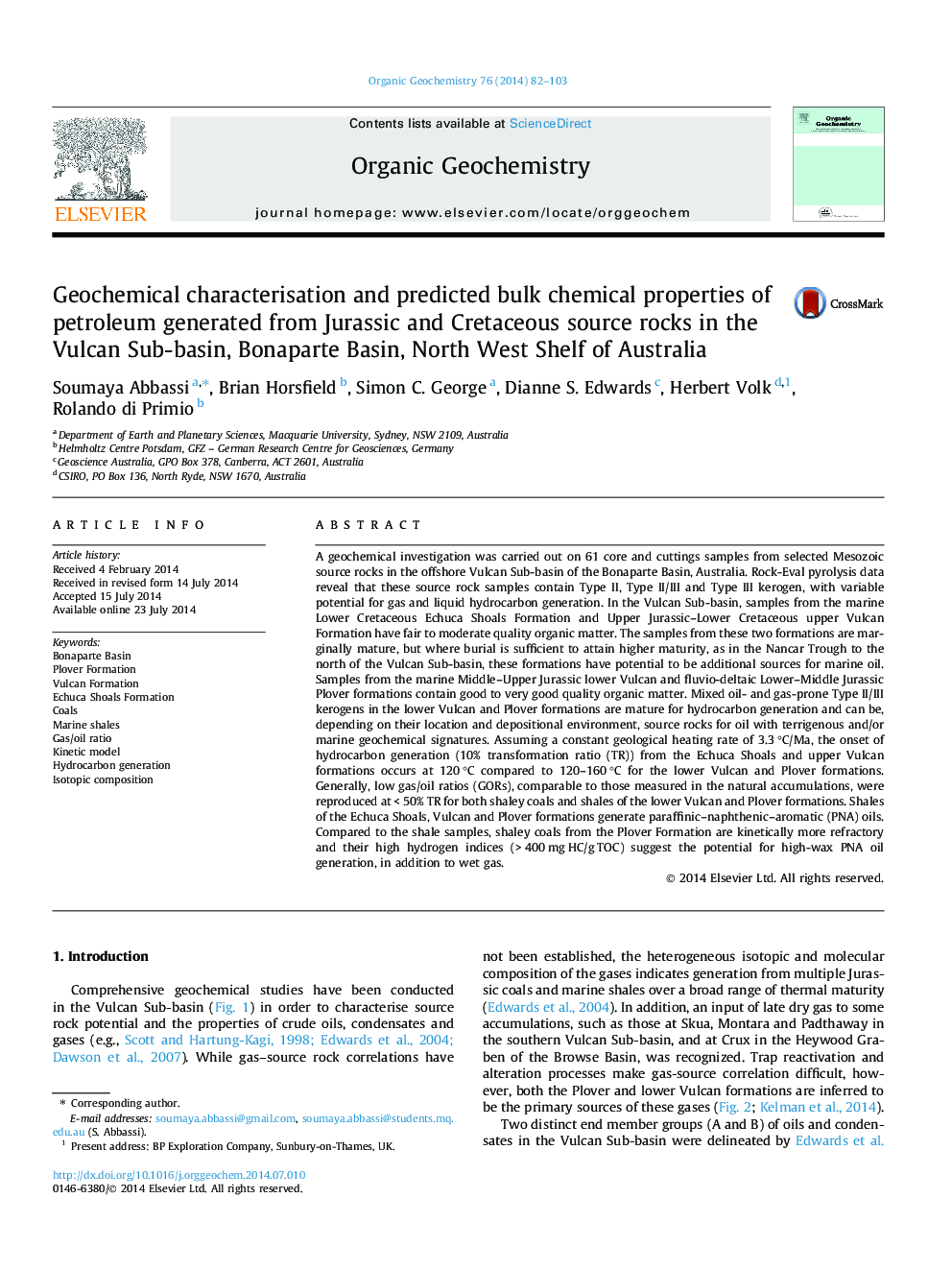| Article ID | Journal | Published Year | Pages | File Type |
|---|---|---|---|---|
| 5162242 | Organic Geochemistry | 2014 | 22 Pages |
Abstract
A geochemical investigation was carried out on 61 core and cuttings samples from selected Mesozoic source rocks in the offshore Vulcan Sub-basin of the Bonaparte Basin, Australia. Rock-Eval pyrolysis data reveal that these source rock samples contain Type II, Type II/III and Type III kerogen, with variable potential for gas and liquid hydrocarbon generation. In the Vulcan Sub-basin, samples from the marine Lower Cretaceous Echuca Shoals Formation and Upper Jurassic-Lower Cretaceous upper Vulcan Formation have fair to moderate quality organic matter. The samples from these two formations are marginally mature, but where burial is sufficient to attain higher maturity, as in the Nancar Trough to the north of the Vulcan Sub-basin, these formations have potential to be additional sources for marine oil. Samples from the marine Middle-Upper Jurassic lower Vulcan and fluvio-deltaic Lower-Middle Jurassic Plover formations contain good to very good quality organic matter. Mixed oil- and gas-prone Type II/III kerogens in the lower Vulcan and Plover formations are mature for hydrocarbon generation and can be, depending on their location and depositional environment, source rocks for oil with terrigenous and/or marine geochemical signatures. Assuming a constant geological heating rate of 3.3 °C/Ma, the onset of hydrocarbon generation (10% transformation ratio (TR)) from the Echuca Shoals and upper Vulcan formations occurs at 120 °C compared to 120-160 °C for the lower Vulcan and Plover formations. Generally, low gas/oil ratios (GORs), comparable to those measured in the natural accumulations, were reproduced at < 50% TR for both shaley coals and shales of the lower Vulcan and Plover formations. Shales of the Echuca Shoals, Vulcan and Plover formations generate paraffinic-naphthenic-aromatic (PNA) oils. Compared to the shale samples, shaley coals from the Plover Formation are kinetically more refractory and their high hydrogen indices (> 400 mg HC/g TOC) suggest the potential for high-wax PNA oil generation, in addition to wet gas.
Related Topics
Physical Sciences and Engineering
Chemistry
Organic Chemistry
Authors
Soumaya Abbassi, Brian Horsfield, Simon C. George, Dianne S. Edwards, Herbert Volk, Rolando di Primio,
